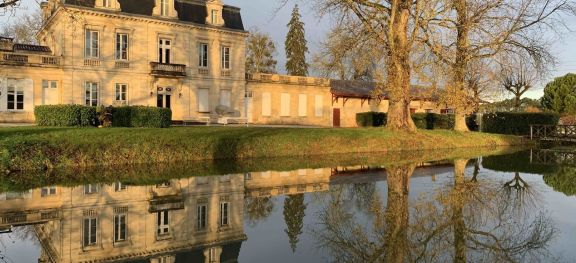Château Ferran 2019 Pessac-Léognan

Proof that delicious red bordeaux needn’t cost a fortune and doesn’t have to be cellared for decades – available from only €18.30, $24.98, £26.25.
There is no escape from Bordeaux this week, I’m afraid, since, when I tasted this wine last month I decided to spread word of it.
It’s part of a collection of affordable wines from Bordeaux amassed by the London and Gloucestershire wine merchant Haynes Hanson & Clark. As attentive readers of this website will be aware, Bordeaux has been going through some turmoil, having difficulty finding customers for the vast amount of red wine it produces – in particular now that red-wine consumption is plummeting in France and consumers elsewhere seem to have lost their overriding respect for and interest in red bordeaux.
But a well-made example can be a delight, and in this case quite a bargain. There is just a bit more subtlety in the wines of Bordeaux, which tend to be drier, more appetising and deep-flavoured than Cabernets and Merlots grown elsewhere.
Of the 12 wines in HH&C’s Bordeaux collection, this one seemed the most impressive, though there were certainly cheaper wines, some of which are very respectable. And there was also a Sauvignon Blanc that I liked.
I’ve long been a fan of the reds of Pessac-Léognan, the wine region closest to the city of Bordeaux, just south of it on the way to Toulouse. They tend to have a special freshness and digestibility, perhaps thanks to the woods that surround so many of the vineyards. (No great need to plant trees in order to boost biodiversity here, unlike the monocultural Médoc.)
Château Ferran may not be one of the classed growths of Pessac-Léognan but is virtually on the doorstep of classed growth Château Latour-Martillac in the Bordeaux suburb of Martillac (although it feels like the leafy depths of the countryside, the roads here can be very busy at commuting times). Château Latour-Martillac 2019 costs about twice as much, such is the value of a classification.
In the 18th century the estate, like Château de la Brède, was owned by the famous philosopher Montesquieu. Since 1999 it has been run by Ghislaine and Philippe Lacoste, Ghislaine being a descendant of the Béraud-Sudreau family of Bordeaux that has owned the property for well over a century. Like so many Bordeaux proprietors, they have recently invested considerably in upgrading vineyards and cellars and are hard at work making it more of a farm than a wine factory, as illustrated below. The estate is not certified organic but has HVE3 (high environmental value) certification.
The introduction of a second wine, Château de Belloc, helps maintain the quality of the grand vin. A total of 19 ha (47 acres) are devoted to vines for red wine, mainly Merlot with a bit of Cabernet Sauvignon and Petit Verdot, while Sauvignon Blanc and a bit of Sémillon are grown on 3.5 ha (8.6 acres) for the dry white.
My tasting note on this fragrant 14.5% wine from a ripe vintage:
Full bottle 1,309 g. 77% Merlot, 13% Petit Verdot and 10% Cabernet Sauvignon grapes on limestone were picked 23 September – 11 October. They enjoyed a total of 30 days’ maceration before 12 months in oak barrels (30% new).
Mid dark garnet with a pale rim. Freshly aromatic – expressive of the appellation. Sweet, fruity start and a relatively low tannin level makes this wine one for fairly early drinking. Appetisingly dry, impressively persistent finish. GV
I recommend drinking it over the next four or five years, and suspect that the relatively high proportion of Petit Verdot in the assemblage has spiced up the aroma to a certain extent.
It’s available from Haynes Hanson & Clark in the UK and also in France, Belgium, Netherlands, Germany, Austria, Ireland, Australia, Brazil, Canada, and the US, where it is particularly well distributed. Try it!
See also this guide to our coverage of Bordeaux 2023 and this very popular, continually updated thread on our forum to keep track of the ongoing bordeaux en primeur campaign.
Become a member to view this article and thousands more!
- 15,417 featured articles
- 274,327 wine reviews
- Maps from The World Atlas of Wine, 8th edition (RRP £50)
- The Oxford Companion to Wine, 5th edition (RRP £50)
- Members’ forum
- 15,417 featured articles
- 274,327 wine reviews
- Maps from The World Atlas of Wine, 8th edition (RRP £50)
- The Oxford Companion to Wine, 5th edition (RRP £50)
- Members’ forum
- Commercial use of our Tasting Notes


